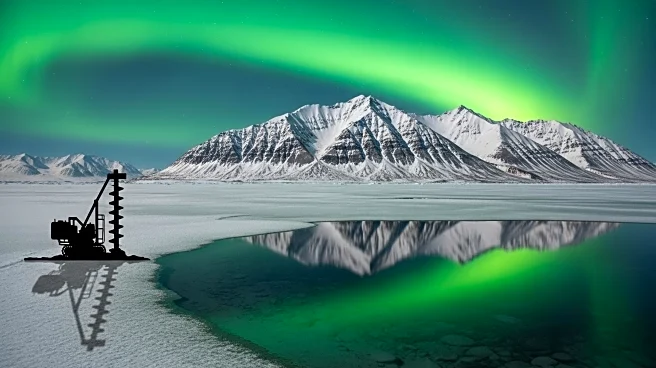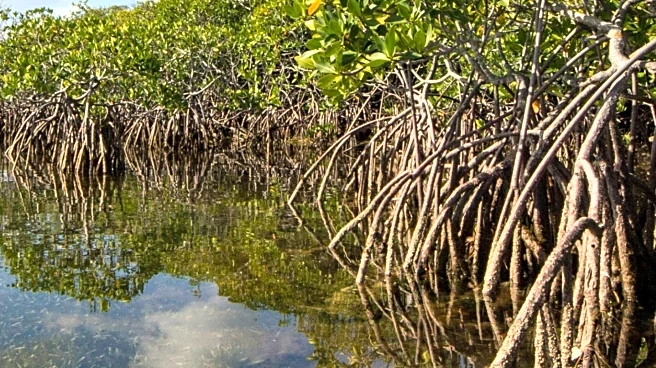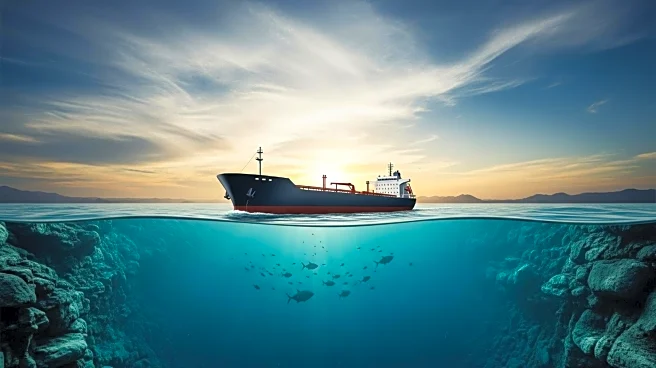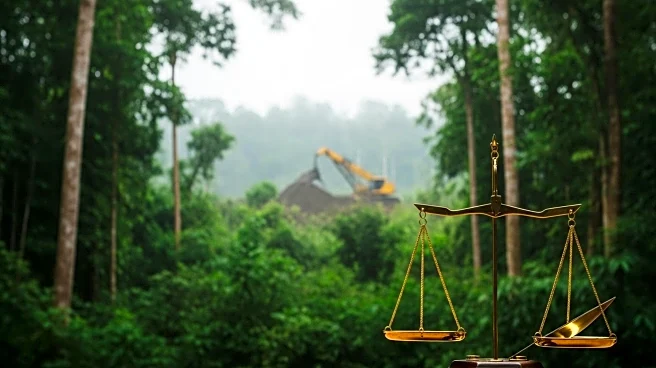What's Happening?
Greenland is experiencing an unusual increase in vegetation, attributed to activities by a mining company. This greening, typically seen as a positive environmental sign, is causing concern due to its impact on the region's ice cover. The phenomenon, known as 'shrubification,' involves the colonization of previously ice-covered areas by plants and trees. This change is accelerating the melting of ice, as the Arctic's natural carbon storage in permafrost is disrupted. The mining company, Amaroq Minerals, is leading exploration projects in Greenland, aiming to extract valuable minerals necessary for green energy technologies.
Why It's Important?
The greening of Greenland poses significant environmental challenges. While increased vegetation might seem beneficial, it disrupts the Arctic's ability to store carbon, potentially accelerating climate change. The melting ice could lead to rising sea levels, affecting global ecosystems and human settlements. The mining activities, while supporting green energy transitions, may exacerbate these issues by further altering the landscape. This situation highlights the complex balance between economic development and environmental preservation, with potential long-term impacts on global climate patterns.
What's Next?
Future studies are needed to assess the full impact of Greenland's greening on the environment. Researchers and policymakers may explore interventions to mitigate the effects of increased vegetation and mining activities. This could involve developing strategies to balance mineral extraction with environmental conservation. The situation calls for international cooperation to address the broader implications of Arctic changes on global climate and ecosystems.
Beyond the Headlines
The ethical implications of Greenland's greening involve the responsibility of mining companies and governments to protect fragile ecosystems. The cultural identity of Greenland, traditionally associated with ice, is at risk of transformation. Long-term shifts in biodiversity and local climate conditions could alter the way of life for indigenous communities. These changes underscore the need for sustainable practices that respect both economic interests and environmental integrity.












